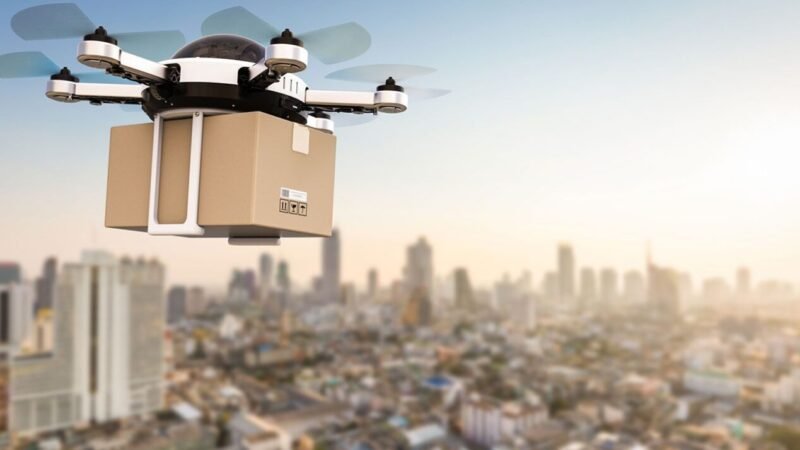How 5G Network Will Change The World

After years of expectation and a considerable amount of publicity, fifth-generation (5G network) wireless networks are finally becoming a reality. 5G technology could affect our lives more dramatically than any technological change from the Internet itself since 5G allows us to reach the potential of a completely connected world. The reasons? Speed, low latency and ubiquity.
Mature 5G network will operate at higher frequencies and distance shorter than 4G, using a dense infrastructure of “towers” the size of shoeboxes located every hundred feet only. That allows them to support billions of devices, almost without latency, at speeds up to 20 times faster than 4G. 5G antennas also consume less power, which makes the protocol better for connecting small Internet of Things (IoT) devices that run on batteries.
How could 5G hyper connectivity affect our lives? Here five fundamental ways:
1. Smart cities
According to the National League of Cities, two-thirds of US municipalities have invested in technology for smart cities. For example, San Diego installed intelligent lighting systems that automatically dim when no one is nearby, saving almost $ 2 million a year in electricity costs. Pittsburgh is replacing 36,000 street lamps with LEDs that contain sensors to monitor air quality. South Bend, Indiana, installed sensors inside the sewer mouth caps that redirect water flow when levels rise too high. For its part, after installing shooting detection microphones in neigh bourhoods with high crime rates, San Francisco reported a 35 percent decrease in the incidents where the shooting occurred.
The upgrade to 5G network will allow cities to handle more data from millions of IoT devices and install low-energy sensors that can last for years without replacement. This will expand your ability to intelligently manage vehicle circulation, air quality, energy use, public safety and more. A 2017 Accenture Strategy report predicts that the use of 5G networks to manage traffic and energy could save cities $ 160 billion.
2. The world of work
Perhaps the broadest impact of 5G network optimization is on industrial and commercial IoT devices. Location beacons already transform the way goods move from inventory to shipping and delivery. ABI Research predicts that more than 500 million objects will be tracked by 2023. Precision agriculture uses sensors in the ground and cameras from the air to identify diseases in crops, determine when to water and reduce the use of pesticides. Smart factories install connected robots to automate dangerous and/or repetitive jobs.
All these changes will increase exponentially once ultrafast wireless networks are installed, with capacity for approximately 125,000 million IoT devices by 2030.
IoT will be an important driver of what will be known as “the fourth industrial revolution”.
The evolution of 4G to 5G network not only implies a ‘plus one’ in the name, but they are also years of transformation of the industry and mainly of technology in telecommunications. This will demand a forced change in processes, costs, technology and people to enable and take advantage of the 5G network. Otherwise, companies will be left out of this offer and those who continue without considering this digital transformation will run the risk of being out of the market.
3. Driverless cars
According to the National Highway Traffic Administration, almost 95 percent of traffic accidents are caused by human errors. Taking people off the wheel could save up to 1.25 million lives each year.
But for driverless cars to be completely autonomous, they should contact the cars around them to avoid accidents and minimize congestion. They should talk to the sensors integrated into the traffic lights, traffic signs and pavement to navigate more safely. And they will need to get answers instantly, which is where 5G networks of low latency are involved.
Read More: Cutting the Cord: How to Hack Your TV Budget
“Only fast networks, such as 5G, can accept latencies of milliseconds,” says Dr. Kevin Curran, a professor at the University of Ulster in Northern Ireland, and leader for the Environmental Intelligence Research Group. “It is not long before driverless vehicles share our roads and one day they will dominate them, but first we must invest in infrastructure.”
Once the infrastructure for driverless traffic is installed, the streets may become less congested and the air less polluted. With fully autonomous vehicles, fewer people will have their own cars and sharing the trip could become more common. The Boston Consulting Group predicts that this will reduce by 60 percent the number of vehicles on city streets and emissions from exhaust pipes by 80 percent.
4. Telemedicine
Visits to the doctor’s office can be as rare as home visits, thanks to virtual visits that low-latency and HD quality wireless networks will make possible. Portable or implanted medical devices will capture their vital signs and transmit them to health care providers, allowing them to detect early warning signs of heart attacks, strokes or other life-threatening events.
“The 5G network infrastructure will open the door to important events in personalized medicine, anywhere, anytime,” says Dr David Teece, a professor at the Haas School of Business at the University of California, Berkeley.
The high speed wireless network will also allow telesurgery, in which specialists located in a hospital will control the equipment in another facility located hundreds of kilometers away. That day may be closer than you think. In January, a surgeon in China who was 30 miles away successfully extracted a part of a pig’s liver using a 5G connection.
5. Virtual spaces
Thanks to the high bandwidth and low latency of 5G, augmented and virtual reality could finally become a practical reality. Telepresence applications with virtual reality will allow colleagues in distant cities to work “side by side,” or sports fans to experience the roar of the crowd in the Super Bowl from the comfort of their sofas. Practically, we can tour the commercial areas of Tokyo during lunch breaks and receive the products in our homes.
All these changes will not happen overnight. Although the main operators are already busy installing limited versions of 5G in cities around the world, devices capable of accessing 5G networks are now starting to appear, and there are still several years left for ultra-high speed implementations.
It took 10G for 10 years to become the predominant cellular technology, and 5G could take even longer. But once fully established, we will wonder how we could live without it.
The 5G will allow us to reimagine what information we want to collect and what we are going to do with all these millions of data, providing a new range of possibilities to the digital world. This new technology will generate new professions and great innovation that will optimize that ‘plus one’ in the name.






